The apricot tree requires a bit of care to produce beautiful apricots, but it’s easy to grow.
Key apricot tree facts:
Name – Prunus armeniaca
Family – Rosaceae
Type – fruit tree
Height – 16 to 20 feet (5 to 6 m)
Exposure – full sun
Soil – ordinary
Foliage: deciduous – Flowering: March – Harvest: middle of summer
Planting, pruning and caring for them is important. Each helps avoid diseases and ensures proper development for your apricot tree.
- Read also: Apricot, all-around health benefits
Planting an apricot tree
Best is to plant your apricot tree in fall, with a distance of about 5 feet (1.5 meters) between trees if you are planting several.
You can also plant your apricot tree in spring or summer but provide for regular watering at the beginning.
Apricot trees require sun to flower correctly.
- Rich and well-drained soil will increase apricot harvest.
- Apricot trees don’t do well in waterlogged and excessively moist soil.
- It is much better to plant in a location that is sheltered from strong wind.
- Refer to our guide for planting.
Be careful! Flowers die off in below freezing temperatures. If you expect late frost spells in your area, choose later-blooming varieties such as the Prunus armeniaca ‘Polish’ variety.
Caring for your apricot tree
Easy to care for, an apricot tree only requires little attention when it is correctly settled in.
To avoid diseases, a simple treatment at the end of winter helps protect your apricot tree from a great number of fungus.
After the blooming, spray Bordeaux mixture. This is particularly effective in stopping apricot fruit rot.
- In spring, bury 1 or 2 handfuls of fruit tree fertilizer at the foot of the apricot tree. Also perform fruit-inducing pruning.
- Early spring, when flowers open, find a beekeeper to help pollinate flowers with bees (optional).
- In fall, spread compost or even manure at the base of the tree. This is also when to do maintenance pruning.
Apricot tree diseases and treatments
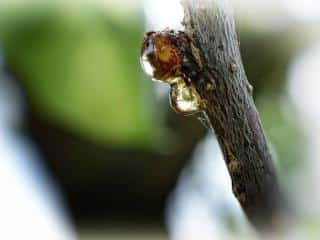
Sadly, these might reach the point where they ruin an entire harvest.
If treated well, and especially if treated in a timely manner, it is possible to avoid most diseases and fungus.
The first weakness to watch out for is spring freezing that can devastate a harvest. Therefore, it is mandatory to plant in the sun and out of strong winds to mitigate this risk.
Most common apricot tree diseases and parasites
Regular spraying of Bordeaux mixture or natural fermented tea as soon as buds open will help control disease. After that, keep spraying until about two weeks before harvesting the apricots. This is a sure way to avoid many fungal diseases. A beautiful summer harvest can then be expected.
- European brown rot – This is the most common apricot tree disease. Apricots literally rot while still on the tree, with brown bruises and white spots appearing.
- Powdery mildew – Young apricot fruits are colonized by this fungus. As a result, a layer of whitish velvet and white spots appear on fruits.
- Aphids – The most common apricot tree parasites. >> Fight aphids off
- Peach leaf curl – same disease attacking peach: peach leaf curl
How to prune an apricot tree
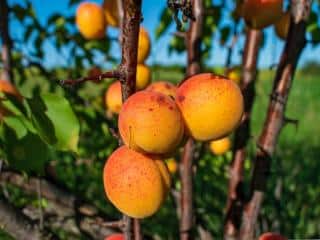
Pruning is performed in spring or fall, as long as it doesn’t freeze.
The goal is only to even out and balance the tree’s growth.
Increase air circulation by removing weak branches. Retain outwards-growing branches.
Pruning apricot trees in spring
In order to coax the tree into producing many beautiful apricots, it is possible to perform a fruit-inducing pruning. Do this before spring growth resumes.
Pruning apricot trees in fall
As soon as leaves have fallen off, maintenance pruning is in order. Slightly reduce any branches that have born fruits. Also ensure removal of weak and damaged branches.
Apricot trees are very vulnerable to wounds. It is a good idea to apply wound-healing paste after pruning.
In case of of abundant production, feel free to thin the fruits in spring. Simply remove a few fruits. One in three or four is fine.
If a branch breaks, cut it off cleanly near the wound and apply pruning paste.
Favorite apricot tree cultivars
- ‘Bergarouge’ – Red colored, sweet and juicy large apricot, harvested from mid-July onwards.
- ‘Bergeron’ – Yellow colored, juicy and harvested in August. This variety is very hardy.
- ‘Hargrand’ – Yellow colored, perfect for jams. Harvested mid-July.
- ‘Luizet’ – Cute, mottled apricot that is particularly juicy, harvested mid-July.
- ‘Muscat’ – Yellow colored, a heirloom variety that is particularly tasty, harvested from mid-July.
- ‘Orangered’ – Red colored, is one of the early varieties, first to be harvested. It is crisp.
- ‘Gros Peche de Nancy’ – Yellow colored, large musk-flavored fruits harvested end of July to beginning of August.
- ‘Pointu de roquevaire’ – Yellow colored, very fragrant and recognizable thanks to its distinctive pointed end. Harvest begins in July.
- ‘Polonais’ or ‘Polish’– Yellow colored, perfect for making your own jam, harvested from beginning of July.
- ‘Rosé de Provence’ – Red colored, very sweet and harvested from early July.
- ‘Rouge de Roussillon’ – Red colored, particularly fragrant and harvested from early July.
- ‘Tardif de Tain’ – Orange-yellow colored, late variety harvested end of August.
All there is to know about apricot tree
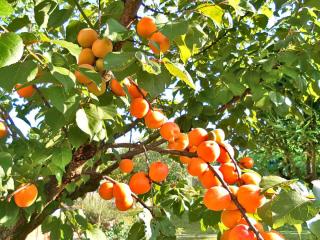
Native to Asia, it likes heat. Depending on the location and the variety, a tree will produce apricots from June for earlier varieties up to August for later ones.
Artifacts prove that it was grown in ancient China over 2000 years ago.
Very productive in terms of fruits and flowers, this little tree has many assets. For instance, colors are beautiful, both in spring with magnificent pinkish white flowers, and in summer with orange yellow apricots.
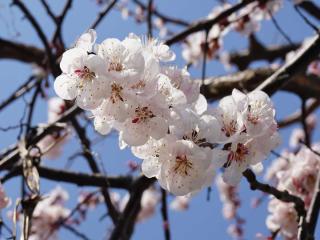
Easy to care for, apricot trees like rather hot and wind-sheltered areas and are simple to grow.
- Read also: health benefits of apricot
Smart tip about apricot trees
No point in watering often, since this tree resists short droughts very well.

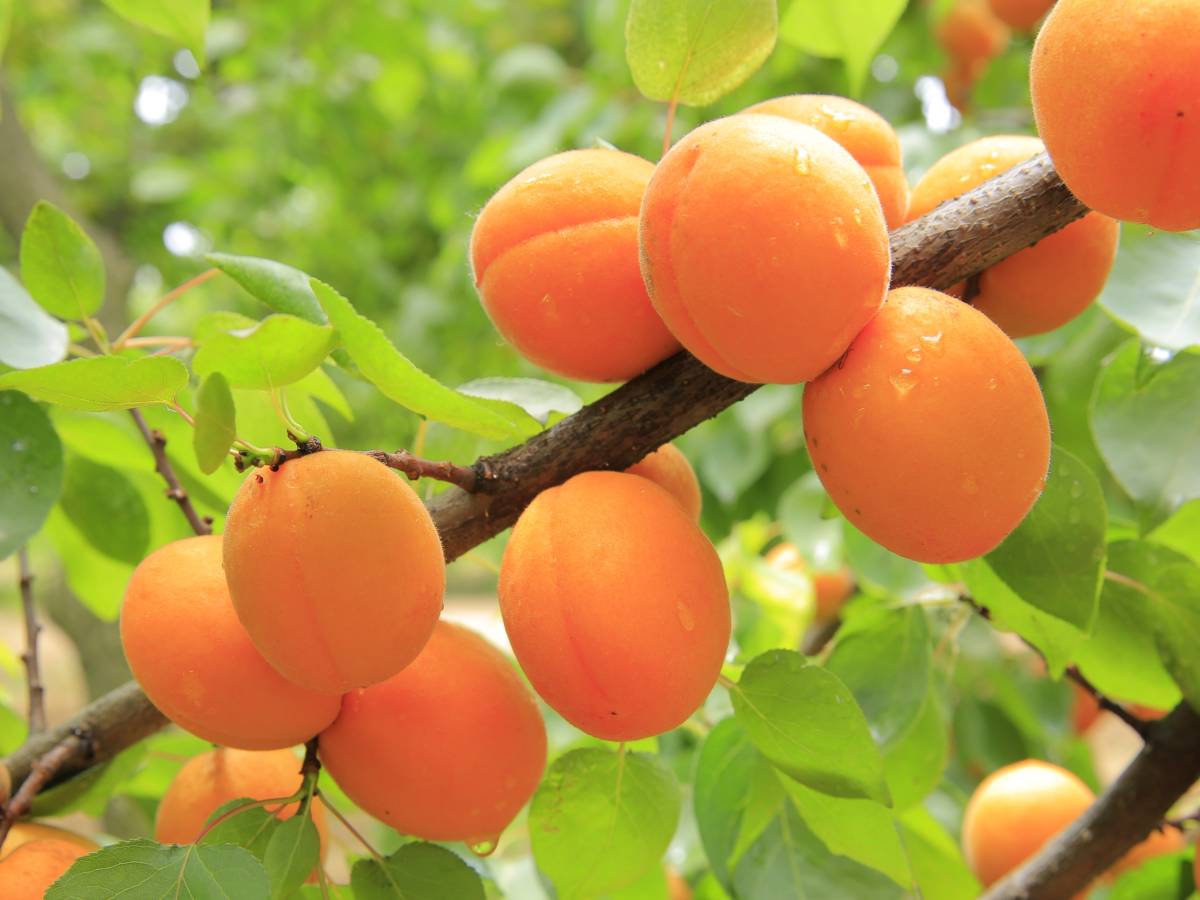
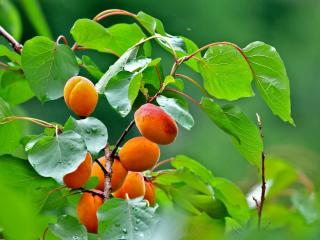
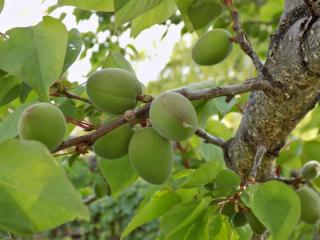
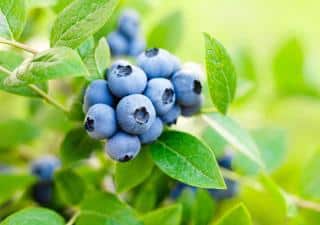
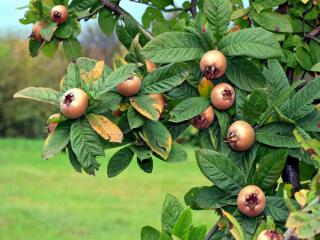
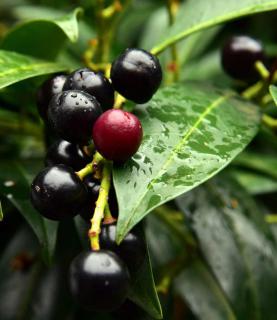
Thank you very much Gaspard, do you have an opinion on the use of Serenade in this case?
Welcome, Robert. I haven’t used Serenade myself. The main ingredient is are compounds produced after fermenting a bacteria called Bacillus subtilis that produces antifungal compounds. These work very well against many fungus. For example, it helps treat brown fruit rot. So I believe there’s a high chance if would be effective in this case, yes.
My 8 yr old apricot has what I believe is Fire Blight. It showed up two years ago with oozing fluid and eatable fruit and dead branches. I have tried Bordo mixture and Bayer Ren….. biological spray and pruning out all of the dead branches last fall, I repeated the Bordo twice over the winter. It bloomed beautifully and fruited well BUT the fruit has developed a reddish color over the normal green. I examined it closely today and found several dead small branches and shriveled leaves. I pruned out the branches, used alcohol rinse after each cut and am waiting for some additional instruction.
Thank you for any assistance you may provide. Robert Fusco, Alpine Ca.
Hi Robert, I think you’re doing pretty good. It’s great that you disinfected between cuts. Treating to contain the disease is an ongoing process. You’ll have to keep spraying Bordeaux mix until the end of July, especially after heavy rains. The copper destroys spores and sprouting fungus, but rain washes it away and promotes spore growth instead.
You can also try making garlic decoctions or fermented horsetail, both of which are also good at dealing with fungus. This can help reduce excessive use of bordeaux mix, which is still the most effective, though.